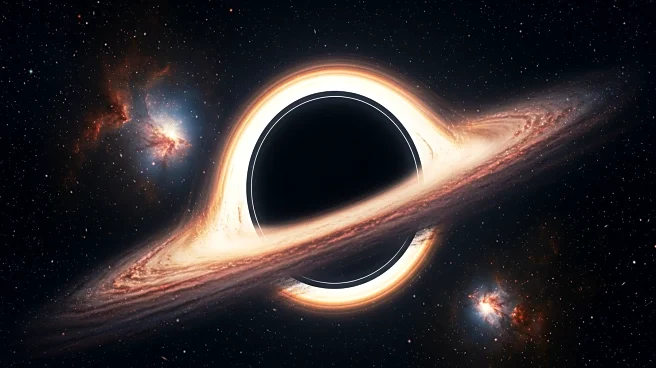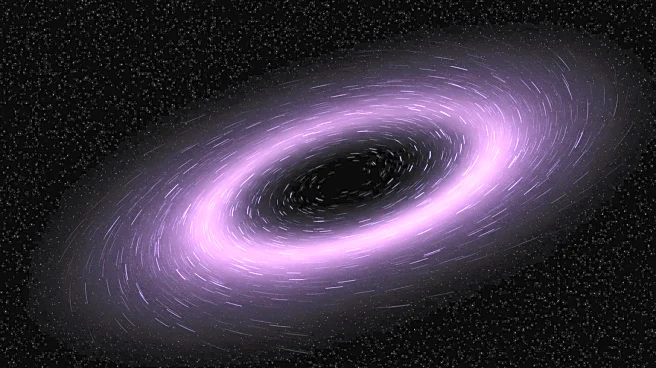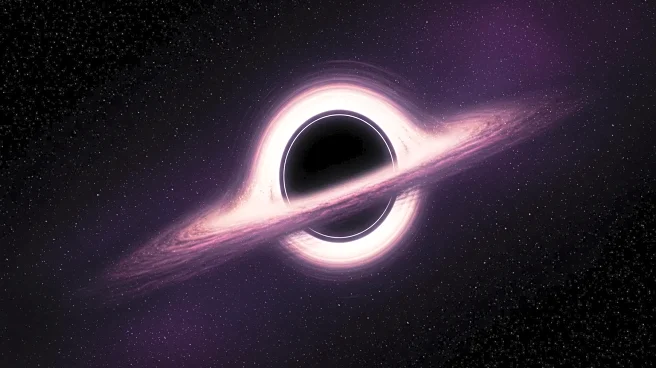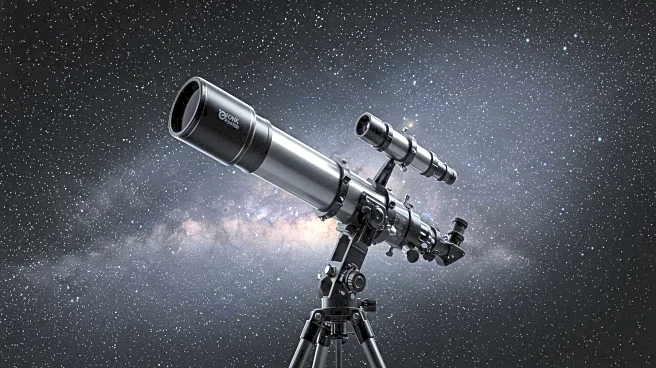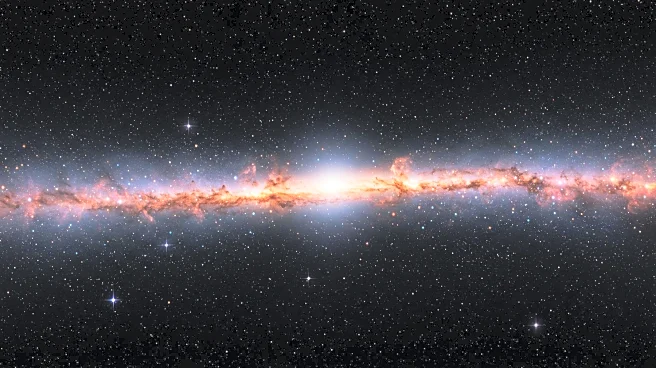Rapid Read • 7 min read
Astronomers have uncovered a black hole, potentially the largest ever found, located at the heart of the Cosmic Horseshoe galaxy. This black hole, estimated to be 36 billion times the mass of the Sun, bends light into a perfect Einstein ring and influences nearby stars at high speeds. The discovery was made by researchers from the University of Portsmouth and Universidade Federal do Rio Grande, using gravitational lensing and stellar kinematics. The Cosmic Horseshoe galaxy, one of the most massive observed, distorts spacetime and warps light into a horseshoe-shaped Einstein ring.
AD
The discovery of this ultramassive black hole challenges existing theories about the upper limits of black hole mass and formation. It provides a unique opportunity to study the effects of gravitational lensing and the dynamics of stars influenced by such massive black holes. Understanding these phenomena could lead to new insights into the nature of black holes and their role in the universe. The research also demonstrates the potential of advanced observational techniques to detect and measure hidden black holes across the cosmos, expanding our knowledge of cosmic structures.
Researchers plan to use data from the European Space Agency's Euclid space telescope to detect more supermassive black holes and their host galaxies. This could lead to further discoveries and a deeper understanding of black hole formation and behavior. The study of the Cosmic Horseshoe black hole may also provide insights into the distribution of dark matter and other cosmic phenomena, contributing to the broader field of cosmology.
AD
More Stories You Might Enjoy
